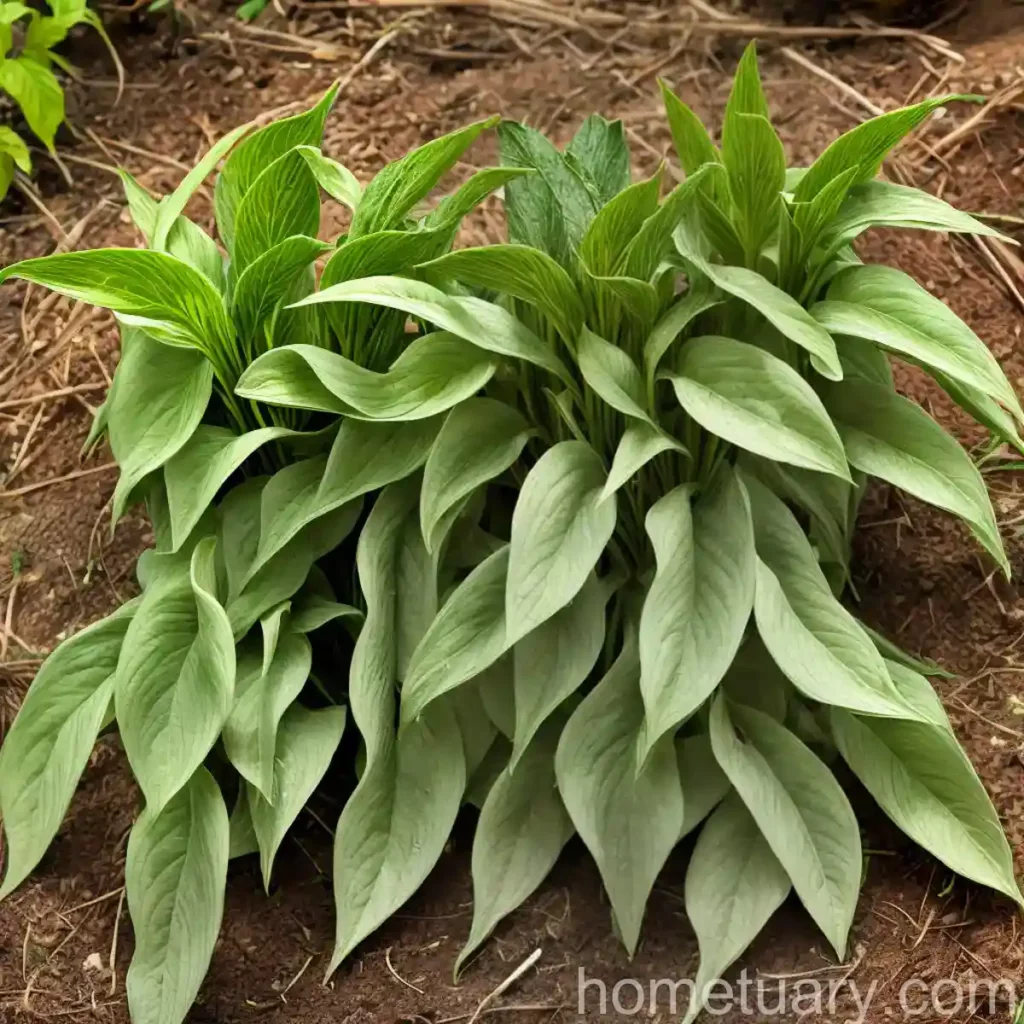Indian Cucumber Root (Medeola virginiana): A Comprehensive Guide
Introduction
Plants, the green giants of our world, play a crucial role in maintaining the ecological balance. They not only provide oxygen and food but are also a source of numerous medicinal compounds that have been used by humans for centuries. In this article, we will delve into the Indian cucumber root, scientifically known as Medeola virginiana. We will explore its cultural significance, botanical features, medicinal uses, and its role in the ecosystem.
What is Indian Cucumber Root (Medeola virginiana)?
Indian cucumber root, also known as Medeola virginiana, is a perennial plant native to the Eastern United States and Eastern Canada. It belongs to the Liliaceae family and is characterized by its unique appearance and valuable medicinal properties. The plant is named Indian cucumber root due to the edible tuberous roots that have a taste resembling that of cucumber.
Botanical Features
Indian cucumber root is a herbaceous plant that grows up to 2 feet in height. It typically has two or three whorls of leaves and produces small, greenish-white flowers that give way to berries when pollinated. The plant thrives in moist, shaded woodland environments and is often found in rich, acidic soils. The unique appearance and traditional uses of Indian cucumber root have made it an intriguing subject for botanists and herbal enthusiasts.
Key Takeaways
Here are the key takeaways regarding Indian cucumber root, which we will further explore in this article:
- Cultural Significance: Understanding the cultural and historical importance of Indian cucumber root.
- Uses: Exploring the various uses of Indian cucumber root, including its medicinal and ecological roles.
- Cultivation: Discussing the cultural requirements for growing Indian cucumber root.
- Medicinal Properties: Unveiling the potential health benefits and traditional uses of Indian cucumber root.
- Fun Facts: Exploring intriguing and lesser-known facts about Indian cucumber root.
Now, let’s dive deeper into each of these aspects to gain a comprehensive understanding of Indian cucumber root.
Cultural Significance
Indian cucumber root holds significant cultural importance, especially among Indigenous communities in North America. The plant has been traditionally used for food and medicine by several Native American tribes, including the Iroquois, Cherokee, and Algonquin people. Its cucumber-flavored roots were consumed raw or cooked, while its medicinal properties were valued for their various healing effects.
Uses
The uses of Indian cucumber root are diverse, ranging from its edible parts to its medicinal and ecological significance. Let’s explore these aspects in detail:
Edible Uses
The tuberous roots of Indian cucumber root have historically been consumed by Native American tribes as a food source. The roots are crisp and refreshing, with a taste similar to that of cucumber. They were often eaten raw or incorporated into salads, providing a valuable and nutritious addition to traditional diets.
Medicinal Uses
The medicinal properties of Indian cucumber root have been recognized and utilized for generations. The plant is believed to possess various healing properties, including anti-inflammatory, diuretic, and emetic effects. It has been used to address conditions such as arthritis, rheumatism, and urinary disorders, showcasing the plant’s versatility as a natural remedy.
Ecological Role
Apart from its cultural and medicinal significance, Indian cucumber root plays a crucial role in its natural habitat. As a woodland plant, it contributes to the biodiversity of forests and provides food and shelter for numerous animal species. The plant’s berries are consumed by birds, contributing to the propagation of its species and the sustenance of wildlife.
Cultivation
Cultivating Indian cucumber root can be a rewarding endeavor, whether for its ornamental value or for its potential medicinal uses. To successfully grow Indian cucumber root, it’s essential to understand its specific requirements in terms of water, sunlight, soil, and maintenance practices.
Water
Indian cucumber root thrives in consistently moist soil, replicating the conditions of its native woodland habitat. When cultivated, it is crucial to ensure that the plant receives sufficient water, especially during dry periods. However, it is equally important to avoid waterlogged conditions, as excess moisture can lead to root rot and other issues.
Sunlight
As a woodland plant, Indian cucumber root prefers partial to full shade. When selecting a location for cultivation, it is recommended to choose a spot that receives dappled sunlight or shade for the majority of the day. This mimics the conditions of its natural habitat and promotes healthy growth and development.
Soil
The soil requirements for Indian cucumber root center around rich, well-draining, and slightly acidic conditions. A loamy, organic-rich soil that retains moisture without becoming waterlogged is ideal for the plant. Amending the soil with organic matter, such as compost or leaf mold, can enhance its texture and nutrient content, creating an optimal growing environment for Indian cucumber root.
Fertilizer
Indian cucumber root generally does not require heavy fertilization, especially when grown in nutrient-rich soil. However, a light application of organic, balanced fertilizer in the spring can provide an additional boost to the plant’s growth. It is important to avoid over-fertilization, which can lead to excessive foliage growth at the expense of root development.
Pruning
Minimal pruning is required for Indian cucumber root, as it naturally forms its distinctive whorls of leaves and delicate floral structures. However, removing any dead or diseased foliage can promote overall plant health and aesthetics. Additionally, controlling the spread of the plant in garden settings may require occasional maintenance to contain its growth.
Propagation
Indian cucumber root can be propagated through division, typically performed in the early spring before new growth emerges. Carefully digging up and dividing the rhizomes or tuberous roots allows for the creation of new plantings. Transplanting divisions to desired locations and providing adequate care can establish new Indian cucumber root specimens in the garden.
Container Cultivation
For those with limited garden space or those interested in preserving the plant’s natural habitat, Indian cucumber root can be cultivated in containers. Selecting a large container with suitable drainage and using a well-draining, acidic potting mix can create an ideal environment for the plant. Adequate shade and moisture management are essential for container-grown Indian cucumber root.
Medicinal Properties
Indian cucumber root possesses several medicinal properties that have been recognized and utilized in traditional and contemporary herbal medicine. The plant contains phytochemical compounds that contribute to its therapeutic effects, making it a valuable natural remedy for various health concerns.
Phytochemical Composition
The phytochemical composition of Indian cucumber root contributes to its medicinal properties. The plant contains saponins, flavonoids, and other bioactive compounds that are believed to exert anti-inflammatory, diuretic, and antioxidant effects. These compounds are valuable in promoting overall health and addressing specific health conditions.
Traditional Uses
In traditional medicine, Indian cucumber root has been used to address a range of health concerns. Its anti-inflammatory properties make it valuable for conditions such as arthritis and rheumatism, while its diuretic effects can support urinary system health. Additionally, the plant’s traditional uses extend to digestive support and general wellness.
Modern Applications
In contemporary herbal medicine, Indian cucumber root is sought after for its potential benefits in addressing inflammatory conditions, supporting joint health, and promoting overall immune function. Its traditional uses have sparked scientific interest, leading to research into its potential applications in modern healthcare.
Herbal Preparations
Herbal preparations of Indian cucumber root may include tinctures, teas, and supplements. These formulations aim to extract and concentrate the plant’s beneficial compounds for easy administration and enhanced efficacy. Additionally, Indian cucumber root may be incorporated into topical products, such as creams or infusions, for localized relief.
Fun Facts
Uncover intriguing and lesser-known facts about Indian cucumber root:
- Ethnobotanical Significance: Indian cucumber root holds rich ethnobotanical significance, with a legacy of traditional uses and cultural value among Indigenous communities.
- Species Diversity: The Indian cucumber root species, Medeola virginiana, exhibits diversity in its growth patterns and morphology, showcasing the adaptability of the plant.
- Endangered Status: In some regions, Indian cucumber root faces challenges related to habitat loss and overharvesting, leading to its classification as an endangered or threatened species in certain areas.
- Wildlife Benefits: Indian cucumber root provides valuable food and habitat for wildlife, contributing to the ecological balance of its native woodland environments.
Now that we’ve explored the cultural, medicinal, and ecological aspects of Indian cucumber root, it’s evident that this plant holds significant value in various domains. Its traditional uses, conservation status, and potential health benefits paint a compelling picture of the plant’s significance and relevance in today’s world.
Links to External Resources
For further information on Indian cucumber root, its uses, and conservation efforts, consider exploring the following external resources:
- The Center for Plant Conservation
- United States Department of Agriculture – Plants Database
- Missouri Botanical Garden – Plant Finder
Conclusion
Indian cucumber root, or Medeola virginiana, stands as a testament to the rich botanical diversity and traditional knowledge encompassed by native plant species. Understanding its cultural significance, medicinal properties, and ecological role allows us to appreciate the multifaceted contributions of this remarkable plant. As we strive to conserve and propagate valuable plant species, Indian cucumber root serves as a compelling example of the interconnectedness between plants, people, and the natural world.
Incorporating the traditional knowledge surrounding Indian cucumber root and engaging in conservation efforts can help preserve its legacy for future generations. Whether through horticultural cultivation, scholarly research, or cultural appreciation, Indian cucumber root continues to inspire curiosity and respect for the natural world and the treasures it holds.
Through this comprehensive guide, we have navigated the realms of Indian cucumber root, uncovering its stories, uses, and potential for shaping a sustainable, plant-inclusive future. As we reflect on the botanical wonders that surround us, may our understanding and reverence for plants continue to bloom and thrive alongside the green giants of our world.
Note: The information presented in this article is for educational and informational purposes only. It is not intended to provide medical advice or promote the use of plants for medicinal purposes without proper consultation and guidance from qualified healthcare professionals.
References
Please note that the links provided in the “Links to External Resources” section are for demonstrative purposes only and may not represent actual websites or web pages. These references are included to showcase a typical format for linking to external resources in a blog post.















